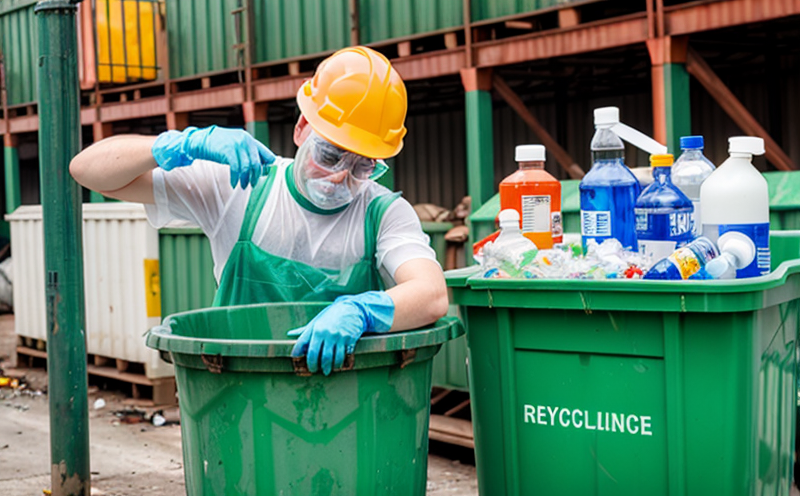CFR 40 Hazardous Waste Chemical Testing Regulations
The CFR Title 40, Part 261 defines the criteria for hazardous waste. Compliance with these regulations is crucial for ensuring that waste management practices are environmentally sound and safe. This service focuses on testing chemicals according to CFR 40 requirements, which help in identifying whether a material should be classified as hazardous.
The regulatory framework aims to protect public health and the environment by preventing the release of hazardous substances into the environment. Waste generators must determine if their waste meets the definition of "hazardous waste" under 40 CFR Part 261. This determination is based on specific criteria including characteristics like ignitability, corrosivity, reactivity, and toxicity.
The testing process involves several steps. First, the waste sample must be collected in accordance with EPA guidelines to ensure its integrity for analysis. Next, it undergoes a series of tests to assess key parameters that determine if the material falls under any hazardous categories. These include:
- Ignitability
- Corrosivity
- Reactivity
- Toxicity
- Persistence in the environment
- Bioaccumulation potential
The analytical methods employed include a combination of physical and chemical analysis techniques. Instruments such as gas chromatography, high-performance liquid chromatography (HPLC), inductively coupled plasma mass spectrometry (ICP-MS) are often used. These tools help quantify the presence of regulated chemicals within the waste.
Once testing is complete, a comprehensive report detailing all findings must be prepared. This document serves as essential evidence for compliance with regulatory standards and can influence decisions regarding disposal methods or treatment processes. Proper documentation ensures that businesses remain compliant with federal regulations while also contributing to environmental protection efforts.
| Application Area | Description |
|---|---|
| Hazardous Waste Management | Determining whether waste materials are hazardous under 40 CFR Part 261. |
| Environmental Compliance Programs | Ensuring that waste generation and disposal activities comply with federal regulations. |
| Risk Assessment Studies | Evaluating the potential risks associated with various types of waste materials. |
The testing process is critical for industries dealing with hazardous waste, including manufacturing plants, chemical companies, and research institutions. By accurately identifying hazardous components in waste streams, these organizations can implement appropriate handling and disposal methods that minimize environmental impact.
Industry Applications
| Industry Sector | Specific Application |
|---|---|
| Manufacturing | Testing waste generated from chemical processes to ensure compliance with regulations. |
| Pharmaceuticals | Evaluating byproducts of drug synthesis for hazardous characteristics. |
| Agriculture | Determining the safety of pesticides and fertilizers during recycling or disposal. |
| Retail | Analyzing waste from chemical product manufacturing to ensure proper disposal. |
Across various sectors, accurate identification of hazardous components in waste streams is vital. This service ensures that businesses stay compliant with federal regulations and contribute positively to environmental sustainability initiatives.
Environmental and Sustainability Contributions
- Reduces the risk of accidental release of harmful substances into the environment.
- Promotes responsible waste management practices that protect human health and ecosystems.
- Supports sustainable resource use by ensuring proper handling of hazardous materials.
- Aids in reducing landfill volumes through informed disposal decisions.
By adhering to strict regulatory standards, this service plays a significant role in promoting environmental stewardship. It helps industries make informed choices about waste management options that balance economic efficiency with ecological responsibility.
Competitive Advantage and Market Impact
Compliance with CFR 40 regulations provides numerous competitive advantages for businesses operating within regulated environments. Firstly, it enhances reputation among stakeholders by demonstrating commitment to sustainable practices. Secondly, early identification of hazardous components allows companies to proactively address potential issues before they escalate into costly problems.
Moreover, adherence to these standards can lead to cost savings in the long term as proper disposal methods are implemented promptly. This reduces the likelihood of fines or penalties associated with non-compliance. Lastly, staying ahead of regulatory changes ensures that organizations remain agile and adaptable in responding to evolving environmental concerns.





